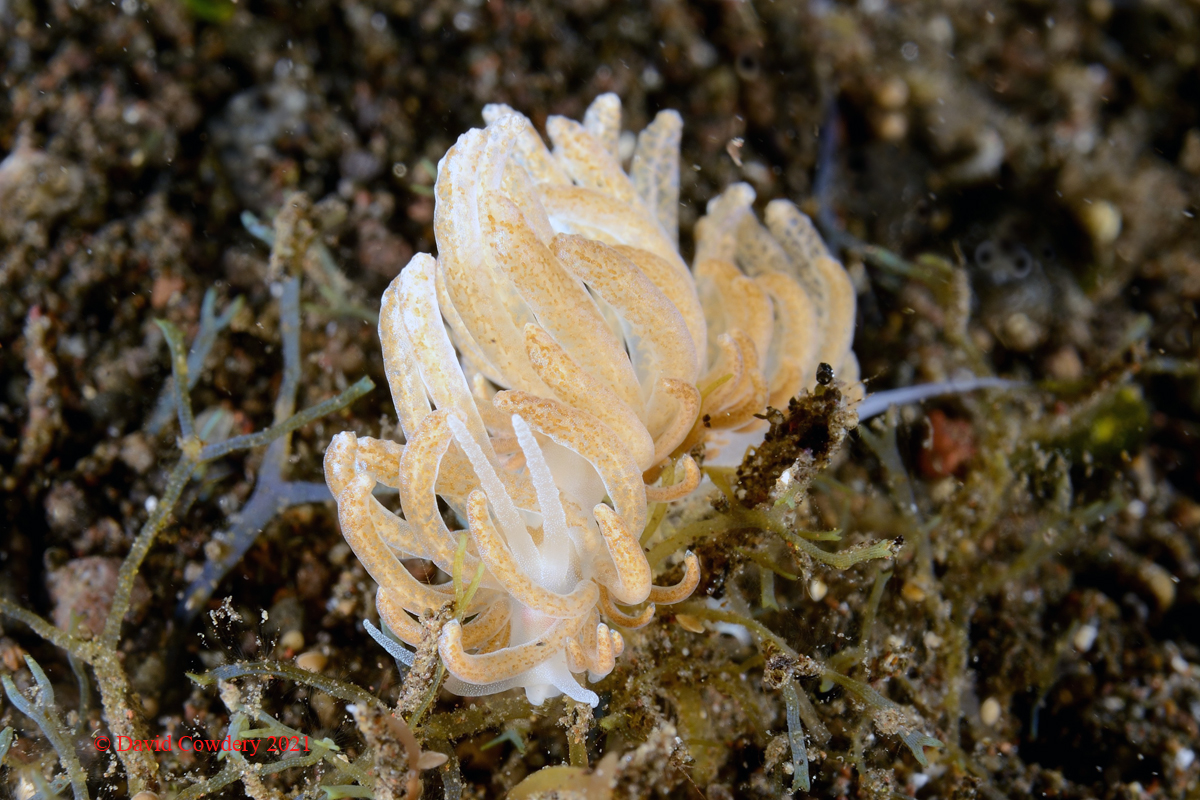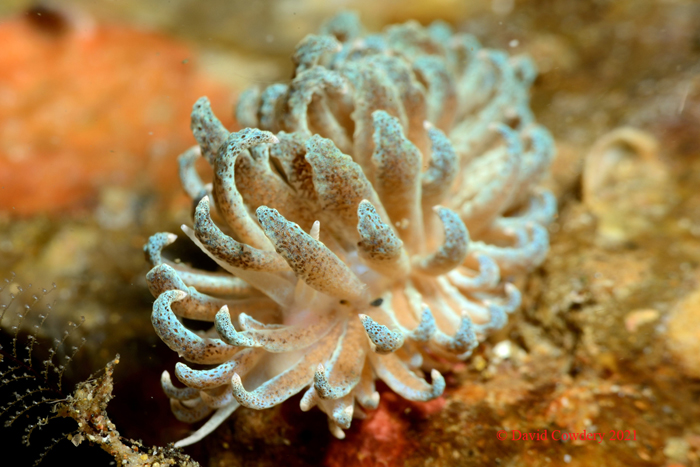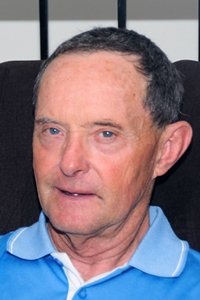 |
Image courtesy of David Cowdery
Dive Site Bontoh Village, Sangeang Island, Indonesia
|
Image courtesy of David Cowdery Dive Site Sandview in Anilao, Batangas, Philippines  |
Phyllodesmium hyalinum Ehrenberg, 1831 The genus Phyllodesmium is found only in the tropical Indo-Pacific. They are specialized predators feeding on octocorals. Most species have symbiotic zooxanthellae which may provide additional nutrition. Unlike most other aeolids, they lack the ceratal sacs that store nematocysts. P. hyalinum is the perfect example of one of the species that is cryptic on its host food, mimicking the polyps of the soft coral. The body is translucent white with opaque white frosting. The cerata are relatively smooth to nodulous and curved apically. Although not seen in David's photos, the anus is quite tall dorsally. We have observed this species feeding on the octocoral Xenia. Found throughout the Indian and Western Pacific oceans. David specimens were photographed as follows - the brown animal is from Bontoh Village, Sangeang Island, Indonesia while the blue specimen is from Sandview in Anilao, Batangas, Philippines. Dave Behrens Sammamish, WA 98074 Jan., 2022 Send Dave email at davidwbehrens@gmail.com |

Dave Cowdery is a retired bio-medical Engineer and is the inventor of the Alumina/Titanium hermetic feedthrough (1970) for implantable bionics and the first to introduce a Titanium casing. This invention created the first bionic implant (pacemaker) with a service life that could be measured in years rather than months and is the basis for todays huge multi billion dollar bionic industry. David's pacemaker invention and his critical contribution to the launching of the Cochlear hearing implant has recently been recognised in two authoritative books ( "Innovative and Intelligent Bioceramics in Translational Medicine" and "Alumina Ceramics-Biomedical and Clinical Applications"). David is a Divemaster with over 5,500 dives experience and is based near Byron Bay in Australia. David is also a keen competitive road bicycle rider covering over 400 km most weeks. Photographic equipment used Nikon D800 camera with DS160 substrobes.
Send Dave mail at divec@ozemail.com.au
|

Attention all you Sluggers, and you know who you are! The NSSI 2nd edition is now available in ebook PDF and book form . The hard back version will become available Nov. 1st. Both will cost $65 (individually). You will need to jump through a few hoops to get the electronic version as pdf distribution is protected by Adobe ID!! Please read the following to enable reading your electronic purchase! This new 2nd Edition is updated and reorganized, including 185 new species. Among other features, the new edition includes additional photographs of species, an identification key, and an up-to-date classification reflecting the latest evolutionary relationships. The Indo-Pacific represents the largest expanse of tropical ocean in the world, stretching from the Indian Ocean coast of southern Africa and the Red Sea to the central Pacific of the Hawaiian Islands, Easter Island and the Marquesas. This region supports the most diverse marine fauna of any place in the world for most groups of marine organisms. The nudibranchs and sea slugs are no exception to this rule; there are about 3,000 described species of these organisms in the world and at least 40% of these have been found exclusively in the Indo-Pacific tropics. This book illustrates 2,138 Indo-Pacific nudibranchs and sea slugs, including many undescribed species.
|

|
